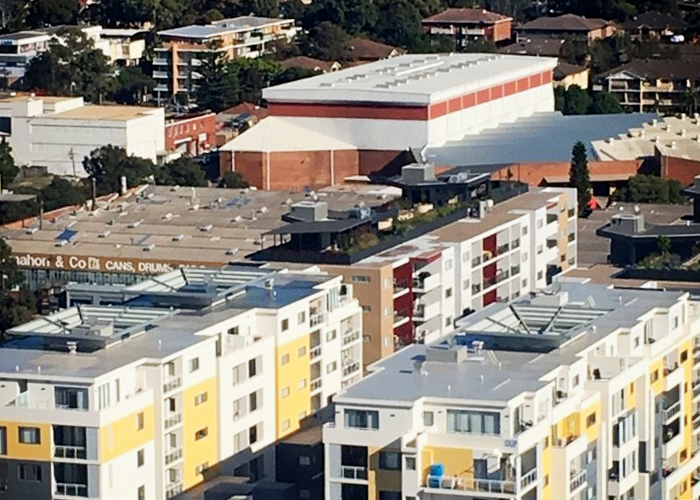Applying Liquid Waterproofing Membranes in Winter with GCP

GCP's Ultraure A-80 membrane and top coat system for roof top waterproofing.
Applying Liquid Waterproofing Membranes in the Australian Winter
Liquid applied waterproofing offers many advantages over sheet membranes such as speed of application, seamless finish, and flexibility to adapt to movements. However, liquid membranes, coatings, and accessories will behave differently than they do in warmer conditions. You would notice things like:
- Higher product viscosity.
- More difficult application by roller.
- Slower curing and longer cure time between coats.
- Rougher surface finish of cured product.
Here are some best practices for applying GCP's liquid waterproofing in cold weather conditions.
- Read product datasheet carefully and pay attention to product application temperature range. Always apply product only between GCP's published application temperature range.
- Check Dew Point, which is the atmospheric temperature (varying according to pressure and humidity) below which water droplets begin to condense and dew can form.
- Make sure the difference between Substrate Temperature and Dew Point is more than 3°C - substrate must be at least 3°C warmer than the Dew Point to prevent condensation and potential waterproofing blistering or delamination.
- Choose two-part polyurethane liquid membrane over one-part polyurethane membrane when relative humidity drops below 40%. One part polyurethane membrane cures extremely slow when humidity is low.
- Do not store product outside overnight. Low product temperature will affect its curing time.
Learn more about GCP's liquid waterproofing solutions at gcpat.com.au.
|



 SILCOR Liquid Waterproofing by GCP
SILCOR Liquid Waterproofing by GCP Leading Concrete Technology Supply by
Leading Concrete Technology Supply by Sustainable Cement Manufacturing with
Sustainable Cement Manufacturing with Sustainable Ready-mix Concrete Delivery
Sustainable Ready-mix Concrete Delivery Underground Injection Materials for Leak
Underground Injection Materials for Leak Commercial Flooring Moisture Barriers
Commercial Flooring Moisture Barriers Commercial Building Passive Fire
Commercial Building Passive Fire Construction Concrete Solutions from GCP
Construction Concrete Solutions from GCP Lower Emissions with Concrete
Lower Emissions with Concrete Perm-A-Barrier Advanced Weatherproofing
Perm-A-Barrier Advanced Weatherproofing Bridge Deck Waterproofing Membranes from
Bridge Deck Waterproofing Membranes from Facade Waterproofing and Air-Tightness
Facade Waterproofing and Air-Tightness Pre-Applied Waterproofing Membranes at
Pre-Applied Waterproofing Membranes at Liquid Applied Waterproofing Frequently
Liquid Applied Waterproofing Frequently Complete Building Envelope Solutions
Complete Building Envelope Solutions Below-Ground Waterproofing Solutions
Below-Ground Waterproofing Solutions Waterproof Tanking Techniques with
Waterproof Tanking Techniques with Pre-Applied Waterproofing Membranes for
Pre-Applied Waterproofing Membranes for Tall Building Fire Protection,
Tall Building Fire Protection, Preprufe Membrane Pre-Applied
Preprufe Membrane Pre-Applied
